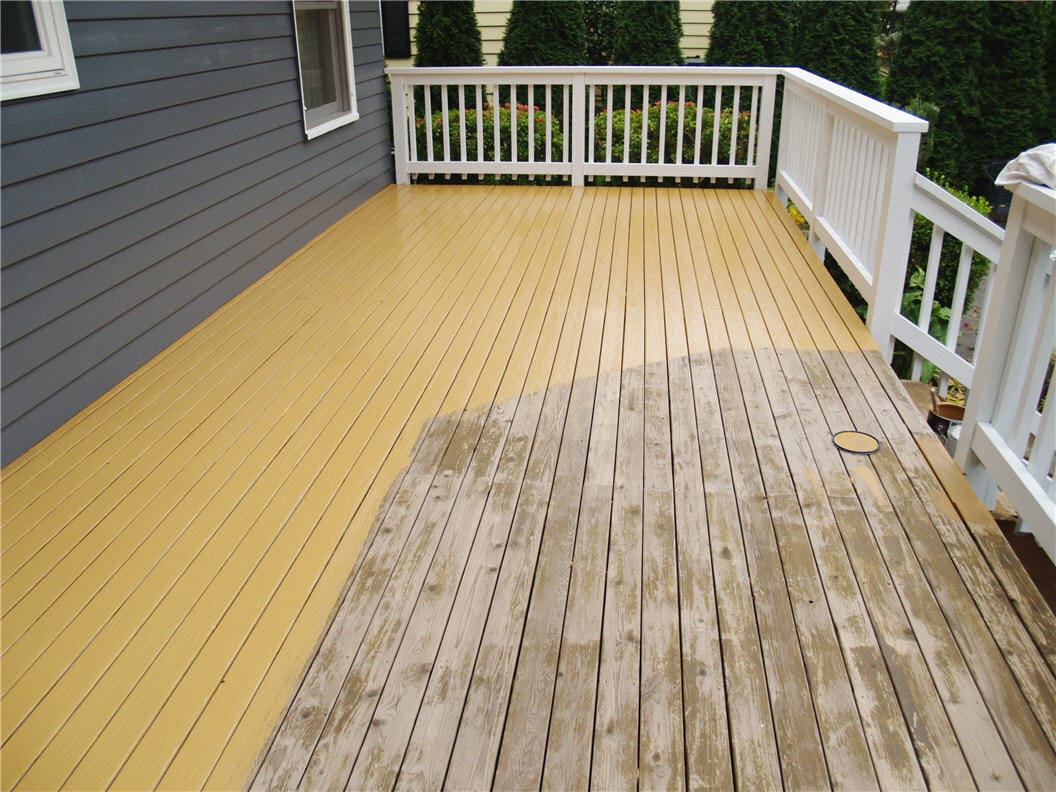Boosted Protection: Fence Staining and Sealing Solutions
Boosted Protection: Fence Staining and Sealing Solutions
Blog Article
Selecting the Right Stain for Your Fencing: Tips and Considerations
When it comes to keeping and improving the look of your fencing, selecting the appropriate stain is important. We will explore the various types of fence stains, elements to take into consideration before selecting a stain, tips for preparing your fence for discoloration, and the distinctions between oil-based and water-based spots. Furthermore, we will dig into choosing the best stain color to complement your fence and improve your outside area.
Understanding Various Sorts Of Fencing Stains

On the various other hand, water-based stains are made from acrylic or latex and provide a more subtle shade to the wood. Water-based spots are simpler to cleanse up and have a faster drying out time contrasted to oil-based discolorations.
Picking between water-based and oil-based discolorations depends on numerous factors, consisting of personal choice, the wanted look, and the level of upkeep required. Oil-based discolorations are recommended for fence high-traffic areas or those regularly exposed to extreme weather. fence staining. Water-based spots, on the various other hand, are a prominent choice for surround suburbs where appearance and convenience of use are essential
Understanding the differences in between water-based and oil-based discolorations assists homeowners make a notified choice when choosing the best stain for their fencing. Taking into consideration the details demands of the fencing, such as its location, exposure to sunshine, and wanted visual, will certainly make certain that the selected tarnish offers long-lasting security and boosts the overall appeal of the fence.
Factors to Consider Prior To Picking a Spot

Different kinds of timber absorb spots in a different way, resulting in varying degrees of color intensity and toughness. Additionally, specific timbers might be more susceptible to problems like rot or insect infestation, which might impact the selection of stain to shield and preserve the fence.
The environment and weather in your location need to likewise be thought about. You might require a stain that supplies extra security versus wetness and UV rays if you live in an area with severe winter seasons or high moisture. If your fence is exposed to guide sunshine for lengthy periods, a discolor with UV preventions can assist prevent fading and discoloration.
Lastly, it is very important to consider your preferred aesthetic. Various spots supply numerous colors and surfaces, permitting you to personalize the appearance of your fence (fence staining and sealing). Take into consideration the general design and layout of your residential or commercial property, in addition to any kind of regional regulations or homeowner association guidelines that may dictate the acceptable stain colors
Tips for Preparing Your Fence for Discoloration
To prepare your fencing for staining, begin by extensively cleansing the surface using a mild cleaning agent and a stress washer or scrub brush. Cleaning up the fencing is an important step as it gets rid of dust, grime, and any type of previous coverings that might hinder the discoloration process. Begin by moistening the fencing with water and after that apply a moderate detergent utilizing a scrub brush or a pressure washer with a low-pressure setup. Rub the surface area carefully, paying additional attention to locations with stubborn stains or mold. Wash the fence extensively with clean water to get rid of all traces of detergent.
After cleaning, allow the fencing to completely dry totally. fence staining. This step is critical as staining a wet or wet surface can bring about bad bond and an irregular surface. Depending upon the climate condition, it may take anywhere from a few hours to a few days for the fence to dry completely. Ensure that the fence is totally dry prior to proceeding with the discoloration process.
Prior to discoloration, inspect the fencing for any type of problems, such as loose boards or nails. This product aids helpful hints to open up the timber pores, enabling the stain to pass through extra effectively and uniformly.

Comparing Oil-Based and Water-Based Stains
When selecting a stain for your fencing, it is essential to compare the characteristics and benefits of water-based and oil-based stains. Both types of stains have their very own advantages and considerations, so it is essential to comprehend the differences between them.
Oil-based discolorations are known for their durability and resistance to tear and wear. They pass through deeply into the timber, giving superb protection versus the aspects. They likewise improve the natural appeal of the timber by highlighting its grain and texture. Furthermore, oil-based stains often tend to last longer than water-based spots, making them a preferred option for fencings.
On the other hand, water-based discolorations are extra environmentally friendly and much easier to cleanse up. They may not provide the same degree of protection as oil-based stains, particularly in severe weather problems.
Eventually, the option in between water-based and oil-based stains depends on your specific demands and preferences. When making your decision, think about elements such as resilience, environmental effect, and simplicity of application. Consulting with a specialist or looking for recommendations from professionals can also help make sure that you select the appropriate tarnish for your fence.
Selecting the Right Stain Shade for Your Fencing
The choice of an ideal tarnish shade for your fence is a vital aspect of enhancing its visual charm and complementing the general design of your outdoor space (deck staining companies near me). The ideal tarnish shade can change a level, common fencing right into a striking prime focus that adds depth and character to your property
When selecting a tarnish shade for your fencing, it is essential to think about the style and design of your home. Earthy tones such as browns and neutrals can create a warm and inviting look if you have a classic or typical design home. On the other hand, if you have a modern-day or modern home, you may consider choosing for strong and dynamic shades that make a statement.
An additional element to think about is the natural environments of your home. If you have a great deal of plant, a stain color that complements the natural landscape, such as eco-friendlies or crimsons, can develop a natural and unified appearance.
In addition, it's worth considering the maintenance required for different stain colors. Lighter colors tend to show dirt and wear more conveniently, while darker shades can conceal blemishes and call for much less constant touch-ups.
Inevitably, the selection of stain color for your fence ought to show your personal style and preferences - deck staining. Make the effort to get in touch with and explore different choices with experts if required, to make certain that you select the ideal discolor color that boosts the elegance and allure of your fencing
Conclusion
In final thought, when it comes to choosing the right tarnish for your fence, it is important to recognize the various types of discolorations offered and think about factors such as longevity and preferred appearance. Choosing the ideal tarnish shade can boost the total visual appeals of your fence.
We will discover the different kinds of fence stains, variables to think about prior to selecting a stain, ideas for preparing your fence for discoloration, and the differences in between oil-based and water-based stains.Setting apart between water-based and oil-based stains is critical when comprehending various types of fencing stains. Water-based spots are easier to clean up and have a much faster drying time contrasted to oil-based stains. Furthermore, oil-based discolorations tend to last longer than water-based spots, making them a prominent choice for fencings.
In verdict, when it comes to selecting the ideal stain for your fence, it is crucial to recognize the different types of discolorations available and think about variables such as resilience and preferred look.
Report this page